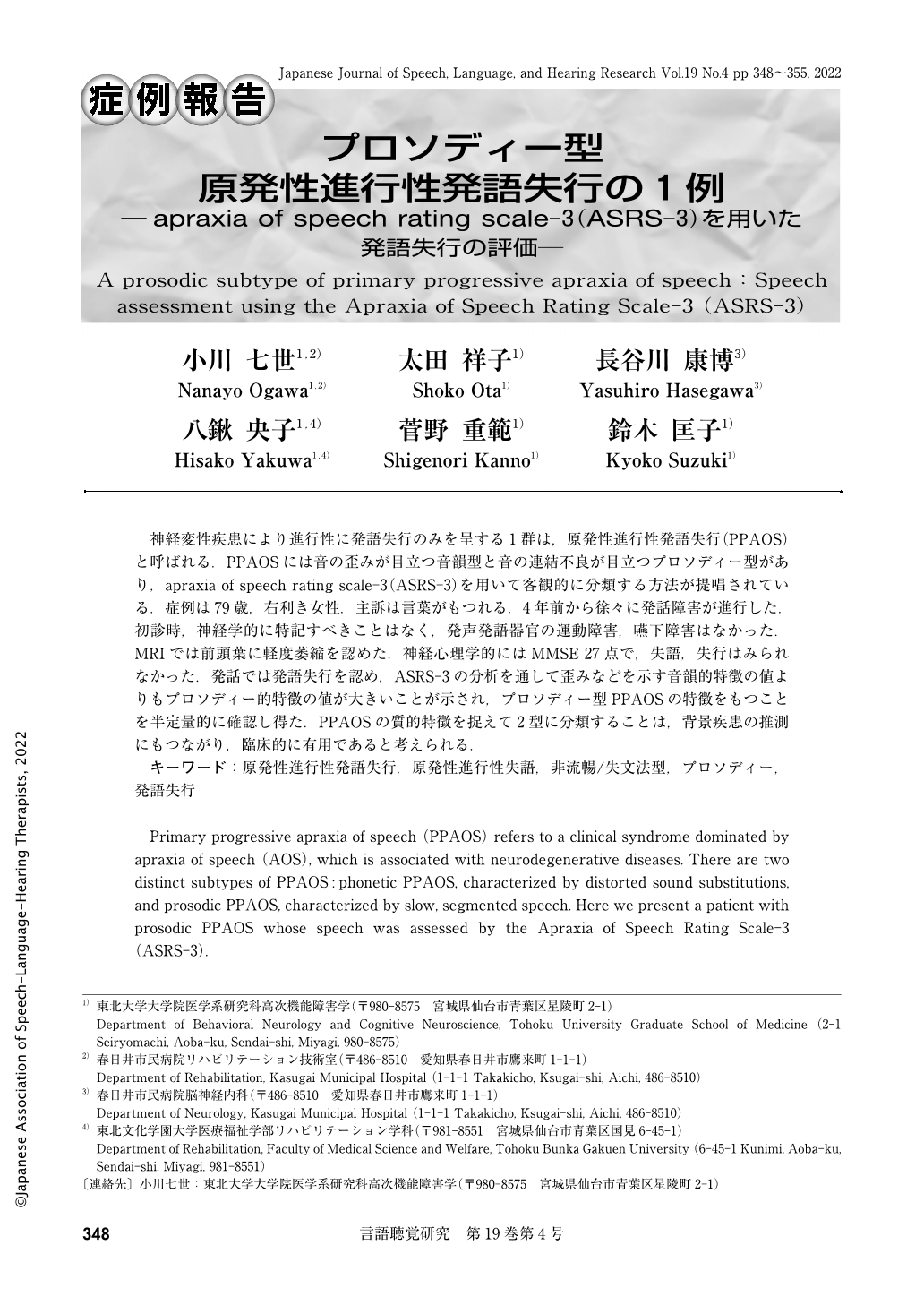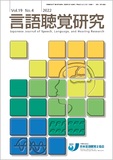Japanese
English
- 有料閲覧
- Abstract 文献概要
- 1ページ目 Look Inside
- 参考文献 Reference
神経変性疾患により進行性に発語失行のみを呈する1群は,原発性進行性発語失行(PPAOS)と呼ばれる.PPAOSには音の歪みが目立つ音韻型と音の連結不良が目立つプロソディー型があり,apraxia of speech rating scale-3(ASRS-3)を用いて客観的に分類する方法が提唱されている.症例は79歳,右利き女性.主訴は言葉がもつれる.4年前から徐々に発話障害が進行した.初診時,神経学的に特記すべきことはなく,発声発語器官の運動障害,嚥下障害はなかった.MRIでは前頭葉に軽度萎縮を認めた.神経心理学的にはMMSE 27点で,失語,失行はみられなかった.発話では発語失行を認め,ASRS-3の分析を通して歪みなどを示す音韻的特徴の値よりもプロソディー的特徴の値が大きいことが示され,プロソディー型PPAOSの特徴をもつことを半定量的に確認し得た.PPAOSの質的特徴を捉えて2型に分類することは,背景疾患の推測にもつながり,臨床的に有用であると考えられる.
Primary progressive apraxia of speech (PPAOS) refers to a clinical syndrome dominated by apraxia of speech (AOS), which is associated with neurodegenerative diseases. There are two distinct subtypes of PPAOS:phonetic PPAOS, characterized by distorted sound substitutions, and prosodic PPAOS, characterized by slow, segmented speech. Here we present a patient with prosodic PPAOS whose speech was assessed by the Apraxia of Speech Rating Scale-3 (ASRS-3).
A 79-year-old right-handed woman was admitted to our hospital with a 4-year history of progressive speech disturbance. On admission, she showed only AOS without dysarthria or aphasia. Neurological examinations revealed no abnormalities. She scored 27/30 on MMSE and her memory and visuospatial functions were preserved. Buccofacial, limb-kinetic, ideomotor and ideational apraxia were not observed. MRI showed slight cerebral atrophy mainly in the left frontal lobe. Her speech was analyzed using the ASRS-3, which provided a quantitative description of the phonetic and prosodic features of AOS separately. Through the ASRS-3 analysis, the score of prosodic features was greater than that of phonological features. The results revealed that her speech had mainly prosodic features of AOS. Assessment of qualitative features of AOS would be beneficial to predict the neurogenerative diseases that are associated with PPAOS.

Copyright © 2022, Japanese Association of Speech-Language-Hearing Therapists. All rights reserved.


